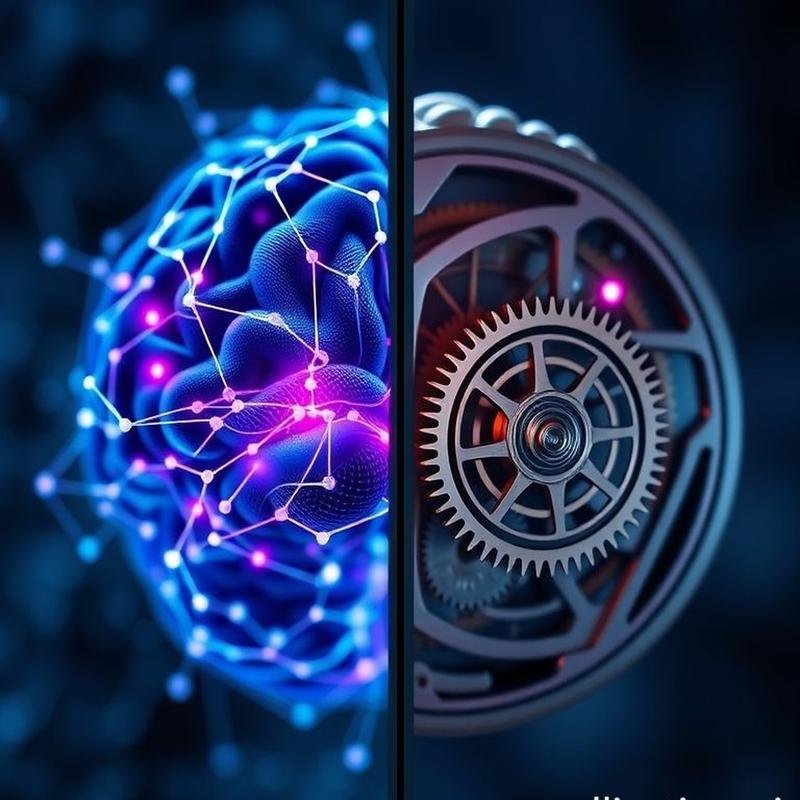Cybernetics and Artificial Intelligence: Envisioning Our Future?

Cybernetics & AI: Shaping Humanity’s Future?
Are we truly living in the future without recognizing it? What if artificial intelligence, often feared as a replacement for humanity, is actually instrumental in understanding the very essence of what makes us human? Not to supplant us, but to illuminate our inherent qualities. This is not merely a science fiction scenario; it is the central question posed by cybernetics, the science of automated control, in the modern era. Can a discipline born from the exigencies of the Cold War redefine our understanding of humanity? Can cybernetics liberate us, rather than constrain us? While some anticipate a post-biological future, what if cybernetics is instead charting a course toward genuine human-machine symbiosis, a future where we not only retain our essence but also discover it with greater profundity? Prepare for an exploration into the core of this compelling paradox, where technology and humanity are inextricably intertwined.
Before we delve into this fascinating world, share your predictions about the future of artificial intelligence in the comments section. And to join us on this journey of discovery, subscribe to our documentary channel.
The Genesis of Cybernetics
In 1948, cybernetics emerged as a new scientific discipline. The term, coined by the eminent MIT mathematician Norbert Wiener, is derived from the Greek word “kybernētēs,” meaning “steersman” or “governor.” Wiener’s focus extended beyond inanimate machines to encompass complex systems and their sophisticated control and communication mechanisms, whether in living organisms or precise mechanical devices. In his seminal work, “Cybernetics: Or Control and Communication in the Animal and the Machine,” Wiener highlighted the remarkable parallels between the organic and artificial realms. Consider, for example, the human body’s temperature regulation system: sensitive receptors transmit critical signals to the central nervous system, which in turn activates sweat glands. This integrated, closed-loop system utilizes feedback to continuously adjust its behavior and maintain a delicate equilibrium. This exemplifies the essence of cybernetics in its simplest yet most profound form.
Cybernetics and the Quest for Artificial Intelligence
However, cybernetics’ influence extended far beyond the traditional boundaries of engineering and biology, inspiring psychologists and sociologists to investigate the very nature of intelligence. Our relentless pursuit to replicate human mental capabilities in machines compels us to re-evaluate our understanding of cognition, consciousness, and creativity. In 1950, Alan Turing proposed the Imitation Game as a benchmark for machine intelligence, but does merely passing this test equate to genuine understanding? The 1956 Dartmouth Workshop, which marked the inception of artificial intelligence research, aimed to simulate problem-solving and language, but can reductionism truly capture the complexity and nuance of human thought? MIT studies have demonstrated AI’s superior performance in narrowly defined tasks, while simultaneously underscoring its limitations in contextual understanding and the inherent adaptability of human intelligence. John Searle, through his influential Chinese Room argument, posits that machines may process symbols with remarkable efficiency without any comprehension of their meaning. Can the 86 billion neurons in the human brain, interconnected by trillions of synapses, be simply reduced to algorithms? Large language models are capable of generating seemingly creative text, but is this genuine creativity or merely a sophisticated recombination of existing patterns? Even AlphaGo’s decisive victory over the world champion in Go did not resolve the fundamental questions surrounding the nature of intelligence and creativity.
The Ethical Crossroads: Augmentation or Replacement?
Are we truly on the cusp of a new era, where the distinctions between humans and machines are becoming increasingly blurred? In 2021, Neuralink implanted a chip in a pig’s brain, and in 2023, Synchron received regulatory approval for similar trials in humans. These are not merely incremental technological advancements; they represent significant strides toward an uncertain future. Are we genuinely seeking to augment our capabilities, or are we progressing toward their eventual replacement? Philosopher Nick Bostrom has cautioned against the existential risks inherent in advanced technology, while Yuval Noah Harari argues that our ambition may drive us to transcend our biological limitations, potentially creating a new class of beings. Gene editing using CRISPR technology, as demonstrated in studies on mice, raises concerning questions about the future of human cognitive abilities. And while DARPA’s NESD program seeks to overcome the challenges of brain-machine communication, the World Health Organization urges careful consideration of issues of equality and justice in access to these technologies. Will we ensure that this future is beneficial for all, or will it exacerbate existing inequalities?
AI as an Ally: A Promising Future
What if artificial intelligence is not a harbinger of doom, but rather a promising ally? What if we could harness this immense power to expand our minds, rather than diminish them? In the field of medicine, AI has the potential to analyze medical images with accuracy exceeding that of the human eye, reducing diagnostic error rates by a remarkable 85%. And in education, intelligent systems can adapt flexibly to the individual needs of each student, resulting in educational gains that surpass those of traditional methods by 30%. Even the arts have been impacted by this technological wave; the painting “Edmond de Belamy,” generated by an algorithm, sold for hundreds of thousands of dollars. In architecture, AI has facilitated the design of sustainable buildings, such as the exemplary “The Edge” in Amsterdam. And in agriculture, drones reduce pesticide use by up to 90%. These are not merely statistics; they offer glimpses of a promising future, a future where humans and machines collaborate.
Charting a Course Toward Human-Machine Symbiosis
What lies ahead? Will we allow algorithms to dictate our future, or will we guide them toward a future where humanity thrives? Norbert Wiener, the pioneer of cybernetics, cautioned against the dangers of abandoning our moral compass. Today, over 70% of AI researchers emphasize the importance of embedding ethical considerations at the core of intelligent systems. Hope lies in the concept of cognitive enhancement, a vision of human-machine integration, not replacement. The IEEE initiative for ethics in autonomous systems aims to establish global standards that ensure the responsible and ethical development of AI. Stephen Hawking himself questioned whether AI would be a blessing or a curse. The answer lies in the choices we make. The post-biological future, as warned by Nick Bostrom, is not inevitable. We can choose a different path, a future where we collaborate with machines and elevate our humanity to unprecedented levels.
Conclusion: A Symbiotic Future
Ultimately, cybernetics reveals that our understanding of artificial intelligence is a reflection of our understanding of ourselves. Instead of fearing replacement, we can view AI as a powerful tool for understanding and enhancing our human capabilities, pushing the boundaries of creativity and innovation to new heights. The future is not a conflict between humans and machines, but a journey toward a symbiosis that allows us to explore our full potential.
In light of our exploration of how cybernetics can be a tool for understanding and enhancing human capabilities in the age of AI, rather than a threat, what challenges and opportunities do you see as most important in achieving this symbiotic coexistence? Share your thoughts to begin a dialogue about our shared future.










